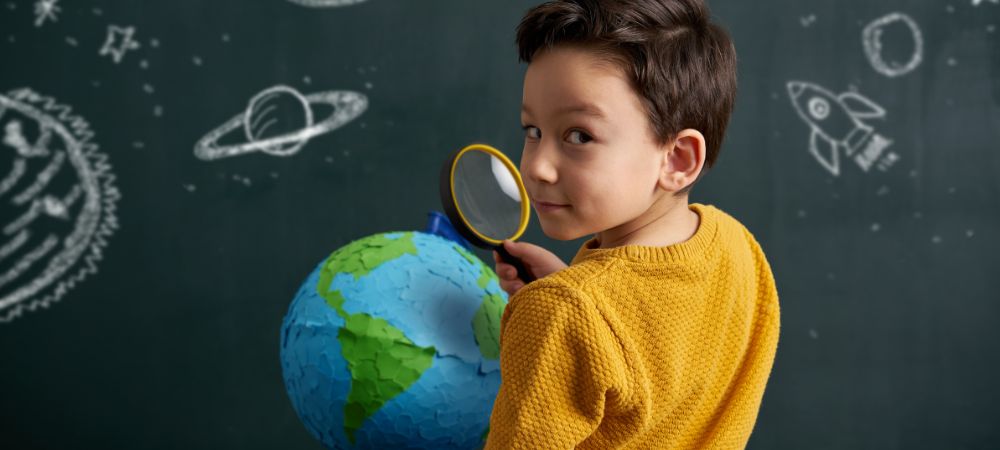

Gamification in the classroom can have many benefits for students. It can make learning more engaging and fun, helping students to stay motivated and focused. By incorporating game elements into lessons, teachers can create a more interactive and dynamic learning environment. This can help to improve student retention and understanding of the material.
One of the main benefits of gamification is that it can encourage collaboration and teamwork among students. Receive the scoop view it. Games often require players to work together towards a common goal, fostering communication and cooperation skills. This can help students develop important social skills that will benefit them both inside and outside the classroom.
Furthermore, gamification can also help to personalize learning for each student. By allowing students to progress at their own pace and receive immediate feedback on their performance, teachers can better cater to individual learning styles and needs. This can lead to improved academic outcomes for all students.
Overall, incorporating gamification in the classroom has the potential to revolutionize education by making learning more engaging, personalized, and collaborative. Teachers who embrace this approach may find that their students are more motivated, attentive, and successful in their studies. So why not give it a try?
Gamification in education has been proven to be a successful method of engaging students and enhancing their learning experience. There have been many instances where gamification has been implemented in schools and universities, resulting in improved student motivation and achievement.
One example of successful implementation of gamification in education is the use of educational games to teach difficult concepts. By turning learning into a game, students are more likely to stay engaged and retain information. In addition, gamification can help students develop important skills such as critical thinking and problem-solving.
Another successful example is the use of leaderboards and rewards systems to motivate students to complete tasks and participate in class activities. By providing incentives for completing assignments or participating in discussions, teachers can encourage students to take an active role in their own learning.
Overall, gamification in education has shown great potential for improving student engagement and academic performance. By incorporating elements of gaming into traditional teaching methods, educators can create a more interactive and dynamic learning environment that caters to the needs of today's digital-native students.
South Korea is well-known for its strenuous education and learning system where pupils often participate in after-school tutoring to obtain affordable sides.
Internationally, over 260 million children and young people ran out college since 2018, highlighting relentless challenges in international education and learning access.
Montessori education, which emphasizes independence and freedom within limitations, has actually been adopted in over 20,000 institutions worldwide, consisting of 5,000 in the U.S. alone.
Educational modern technology financial investments reached over $18.66 billion in 2019, reflecting the growing emphasis on digital learning devices.
Technology plays a crucial role in modern education, there's no doubt about it.. It has revolutionized the way we learn and teach, making the process more interactive and engaging.

Posted by on 2024-05-02
Standardized testing, like, plays a big role in holding schools and educators accountable, you know?. It helps to measure students' knowledge and skills in a consistent way across different schools and districts.

Posted by on 2024-05-02
Parental involvement in schools and at home, it can have a big impact on student success in education.. When parents are involved with their child's schooling, they can help to motivate them and support them in their learning journey.

Posted by on 2024-05-02
So, let's talk about the importance of lifelong learning in staying relevant and adaptable.. Education is not just something you do when you're young and in school - it's a journey that lasts your whole life.

Posted by on 2024-05-02
In today's fast-paced world, it's important to keep up with the latest developments in your field.. By continuously updating your skills and knowledge through lifelong learning, you can ensure that you stay competitive in the job market.

Posted by on 2024-05-02
Hey there!. So, let's talk about transforming your future with quality education opportunities.

Posted by on 2024-05-02
When using gamification in educational settings, there are several challenges and considerations to keep in mind. It ain't always easy to implement games in the classroom, ya know? One major issue is making sure that the games actually enhance learning and ain't just a waste of time. Another thing to think about is how to assess student progress and performance in a game-based environment. It can be tricky to measure success when students are playin' games instead of takin' traditional tests.
Furthermore, it's important to consider the accessibility of gamified activities for all students, including those with disabilities or limited access to technology. And let's not forget about the potential distractions that games can bring into the classroom. It can be hard enough keepin' students focused without addin' more temptations!
Overall, while gamification can be a valuable tool in education, it's essential to approach it with caution and thoughtful consideration. By addressin' these challenges head-on and creatin' well-designed game experiences, educators can harness the power of gamification to enhance learnin' outcomes for all students.

When it comes to integrating gamification into curriculum, there are various strategies that can be used to make the learning experience more engaging and fun. Instead of just relying on traditional teaching methods, incorporating game elements can help students stay motivated and excited about their studies.
One way to effectively integrate gamification is by incorporating game-like activities into lessons. By adding elements such as points, levels, and rewards, students will be more likely to participate and engage with the material. This can help increase motivation and retention of information.
Another strategy is to use technology to enhance the gaming experience. By using platforms such as online games or apps, teachers can create interactive learning experiences that are both educational and entertaining. This can help students learn in a way that feels less like traditional schooling and more like playing a game.
Furthermore, it is important for educators to provide feedback and encouragement throughout the gamified curriculum. By offering praise and constructive criticism, students will feel supported in their learning journey and motivated to continue progressing.
In conclusion, integrating gamification into curriculum can be a powerful tool for enhancing the educational experience. By incorporating game elements, utilizing technology, and providing feedback, educators can create an engaging learning environment that inspires students to reach their full potential.
Gamification in education has a big impact on student engagement and motivation. When students are playing games, they get more excited about learning. It can make boring subjects more interesting and fun. Instead of just listening to a teacher talk, students are actively participating in their own learning process.
By using game elements like points, badges, and leaderboards, teachers can incentivize students to work harder and stay focused. This can help improve their grades and overall performance in school. Games also allow students to challenge themselves and set goals for improvement.
Some people may argue that gamification is just a distraction or a way to avoid real learning. But in reality, it can enhance the learning experience and make it more enjoyable for students. They are more likely to remember information if they are engaged in a game rather than just reading from a textbook.
Overall, gamification is a valuable tool that can increase student engagement and motivation in the classroom. Teachers should consider incorporating game elements into their lessons to keep students interested and motivated to learn.

Gamification in education is a hot topic right now, with many experts predicting that it will continue to grow in popularity. There are some exciting future trends and developments on the horizon that could revolutionize the way we use gamification in the classroom.
One of the most interesting trends is the use of augmented reality games to enhance learning experiences. Instead of just playing games on a screen, students can now interact with virtual objects and characters in real-time. This not only makes learning more engaging but also helps students retain information better.
Another trend to keep an eye on is the integration of artificial intelligence into educational games. AI can personalize learning experiences for each student, providing them with challenges and feedback tailored to their individual needs. This could help address the problem of one-size-fits-all teaching methods that often leave students feeling bored or frustrated.
In addition, there is a growing focus on using gamification to teach important 21st-century skills such as critical thinking, collaboration, and problem-solving. By incorporating game elements into lessons, teachers can create a more immersive learning environment that encourages students to think creatively and work together towards common goals.
Overall, the future looks bright for gamification in education. With advancements in technology and a greater understanding of how games can enhance learning outcomes, we can expect to see even more innovative uses of gamification in the classroom in the years to come. So let's embrace this exciting trend and see where it takes us!